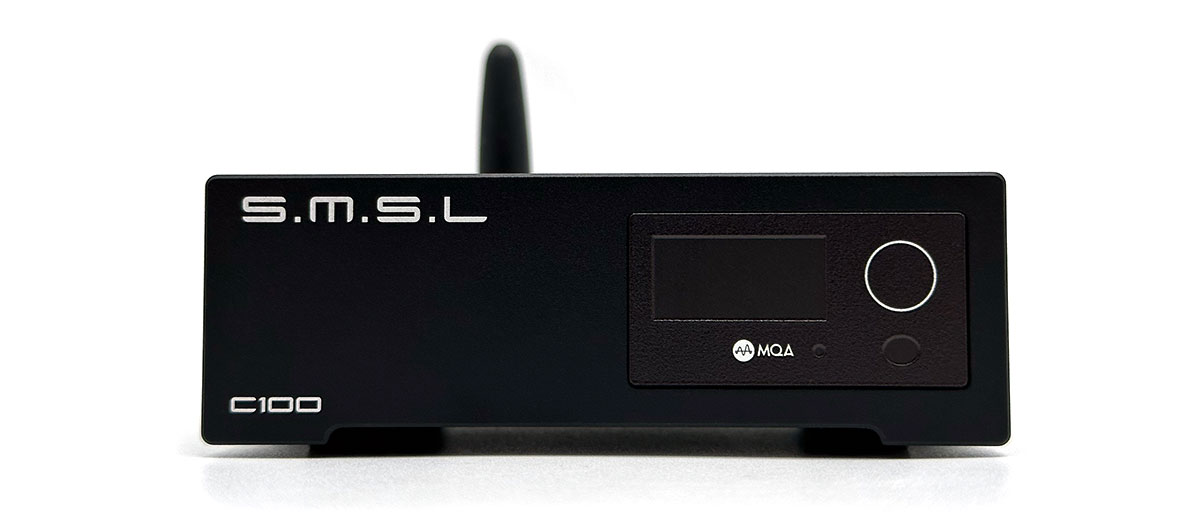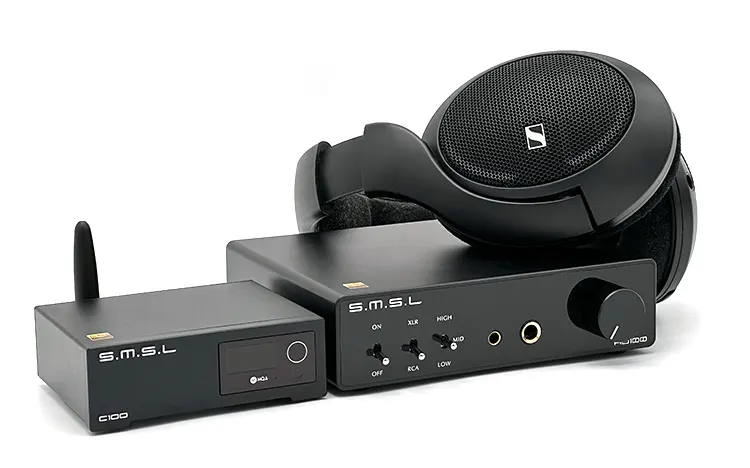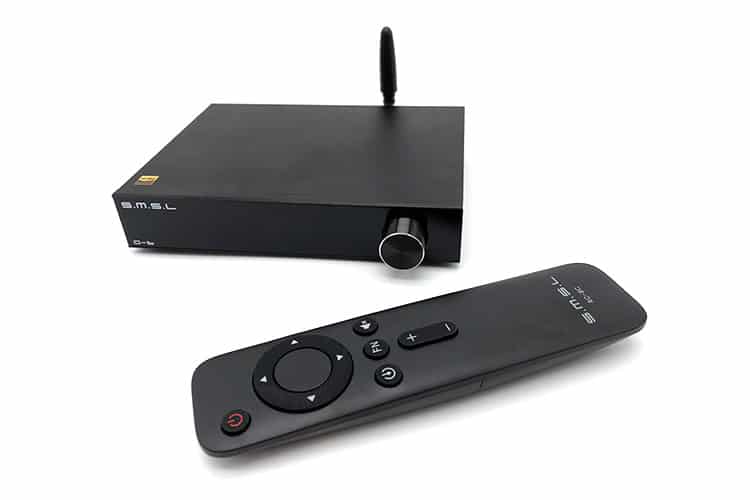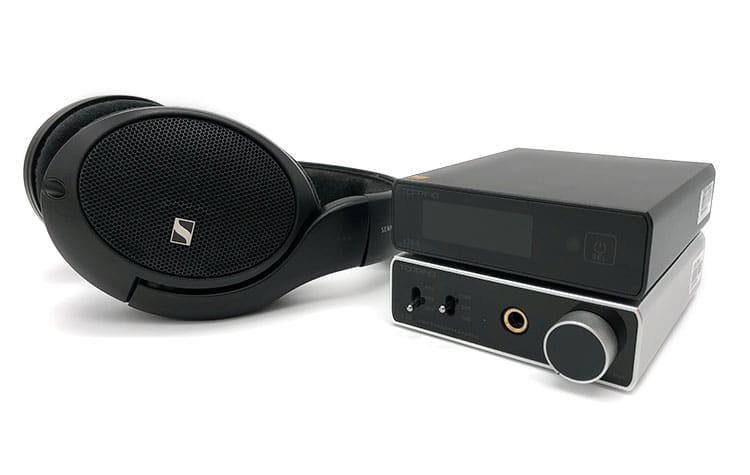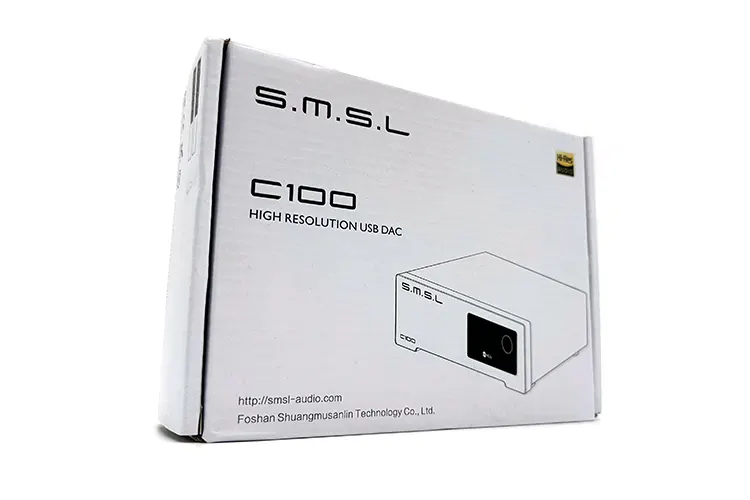Synergy
Pairings
I immediately grabbed the SMSL HO100 amplifier to test since it is close in price and there is no official stack available for the C100 just yet. And to those feeling that the HO100 is too bland, the C100 may not be the most revealing DAC, but it did bring the amplifier some boost in character.
For the most part, the pairing had a mix of natural timbre and linearity. There’s weight added to the lower end of the spectrum thanks to the C100 but the thinner timbre of the HO100 brings back some clarity to most areas.
Listening to the wide stage of the Sennheiser HD560s allows for a fresh and refined picture. It does somehow limit the bass but it helps in the delineation of bass strings. Overall, I like the HD560s for live recordings even though it adds to the dry sound, and the center stage is not as filled in.
Another interesting pairing is the EarMen ST-Amp since I was able to see how much it can match the built-in DAC. The C100 added some scale to guitars and provides velvetiness to the vibrato of singers a bit more. It is also worth mentioning that the punch and timbre of the bass are quite close.
Using the ST-Amp with the HarmonicDyne Athena further thickened the body of notes the C100 is producing. It becomes an accomplice in making a gentle profile but it does not take away from the technical perspective either.
Select Comparisons
SMSL D-6
Technical
Depending on what your priorities are, the two devices check boxes quite differently. Setting a baseline, both are DAC only with no headphone amplifier section installed.
Bringing the cost up a bit but for good reason, the 6.35mm TRS balanced outputs of the D-6 is getting its chops from dual AK4493S instead of just one. The THD+N is slightly lower on the D-6 at 0.00011% which is not too far from the THD+N of 0.00013% on the C100.
Fans of MQA may need to consider the C100 since no MQA decoding is present on the D-6. Drilling into the spec more, the C100 also updates its XMOS module to the latest XU-316 even though playback compatibility remains the same between the two.
Design
From the weight alone, the D-6 more than doubles the compact yet dense chassis of the C100. Nevertheless, since the D-6 has a tactile button instead of a capacitive sensor, users will still have to hold down the unit to prevent it from moving.
Just like the C100, the D-6 has an obvious separation of its assembled structure. As it is, the C100 appears to be more creative by adding false feet in front but the D-6 imparts a more cohesive effect and adds some level of class through the wide plexiglass covering the display.
Looking at the rear, the similarity here is that both are equally clean in their layout. Lined in an almost straight manner, the only advantage of the wider chassis of the D-6 is the presence of the balanced TRS outputs.
Performance
Unlike the C100, those who recall my impressions of the D-6 will remember that it wasn’t as closely associable with an AKM signature. With a tamer tuning that stays true to the rest of the song, the D-6 loses the scale and suppleness of the C100.
For a more inviting presentation and stronger punch, the C100 brings that to the table. The more business-mannered D-6 on the other hand will readily unravel bass lines with crisper and deeper delineation.
Strings on the C100 have a springiness to each pluck that gives it a slower yet natural twang. The D-6 here maintains its form and shows a thinner yet tighter appeal.
While having a more forward midrange, the C100 still only rivals the detail of the D-6 on an almost equal footing. The two are separated by how they handle powerful voices. The D-6 sounds more natural and it also delivers more air to the scene.
The dynamics of the D-6 provide electric guitars the accuracy it needs to emphasize sudden changes in liveliness. Horns are brassier as well and the tighter image helps in isolation and placement.
Topping E30 II
Technical
With no Bluetooth and MQA to begin, the E30 II may seem disadvantaged with connectivity and playback options. Going past these caveats, the E30 II is surprisingly using double of the same AKM chip the C100 has installed even though it can output single-ended signals only.
Like the C100, the included remote on the E30 II greatly improves living with such simple devices. The E30 II can also act as a preamp with a more precise volume variation that goes between 0dB to -99 dB levels.
If the C100, however, can live off of a single USB cable to handle both its power and data requirements, the E30 II still has a dedicated USB-B input for power. Just like how SMSL went with a filtering system to reduce noise on the C100, Topping is using an LNRD circuit to bring the noise floor lower than 1.5uV.
Design
Unlike the C100, the E30 II comes in other color palettes other than the black we reviewed here. Paint options aside, the E30 II uses a tidier execution incorporating both the display and touch-sensitive sensor under a single protective panel.
It can’t be taken for granted though that while both devices have almost the same IO, the C100 still managed to stay smaller in size. However, if the compact footprint is less of a concern, the fact that the E30 II has the L30 II as its official amplifier, then the Topping route might be worth considering when building a stack.
Performance
One of the friendlier sounding Topping devices out there, the E30 II also has a softer and rounder timbre just like the C100 compared to other DACs that chase neutrality.
The E30 II though has a slightly suppler thump than the comparatively drier slap of the C100. There is also more emphasis on the mid-bass region of the E30 II which in turn gives off girthier bass strings.
In a piano accompaniment, I’m getting a neck-and-neck battle for detail retrieval supremacy but the E30 II ever so slightly wins in this regard. The Topping DAC can showcase the subtler regions better and it allows the picture to be more transparent.
Listening to guitars will be more unflustered on the E30 II. Not only is it because it has a more noteworthy texture, but it’s because the C100 on the other hand is drier on the treblier notes.
The last thing I noticed is that the C100 is staging slightly wider than the E30 II while the latter is capable of a taller arrangement.
Our Verdict
The SMSL C100 may seem teasing from the outside but it gets serious where it counts. Despite being one of the cheapest components of SMSL, it still went beyond just covering the basics.
But while I appreciate its tuning’s flexibility to diverse pairings and I can forgive its sometimes shouty nature, the lack of texture in certain areas just reminds me that I may not be getting the full resolution. This is the one minor deterrent for me in fully applauding the C100.
What I can say to close is that even with the tight budget, the C100 seems to carry the same level of attention SMSL has continually proven with its other products. Those who are shopping for a simple DAC that can even double as a preamp might just find the C100 a solid choice.
SMSL C100 Technical Specifications
- DAC: AK4493S
- Input: USB/Optical/Coaxial/Bluetooth
- Output: 2.0 Vrms
- THD+N: 0.00013% (-117dB)
- Dynamic Range: 121dB
- Sampling rate: USB (44.1kHz-768kHz PCM) & Optical/Coaxial (44.1kHz-192kHz PCM)
- Bit Depth: USB (1bit-32bit) & Optical/Coaxial (16bit-24bit)
- Power consumption: <5W
- Standby power: <0.1W
- Size: 77.5 x 32 x 95mm (WxHxD)
- Weight: 190g/0.39lbs

